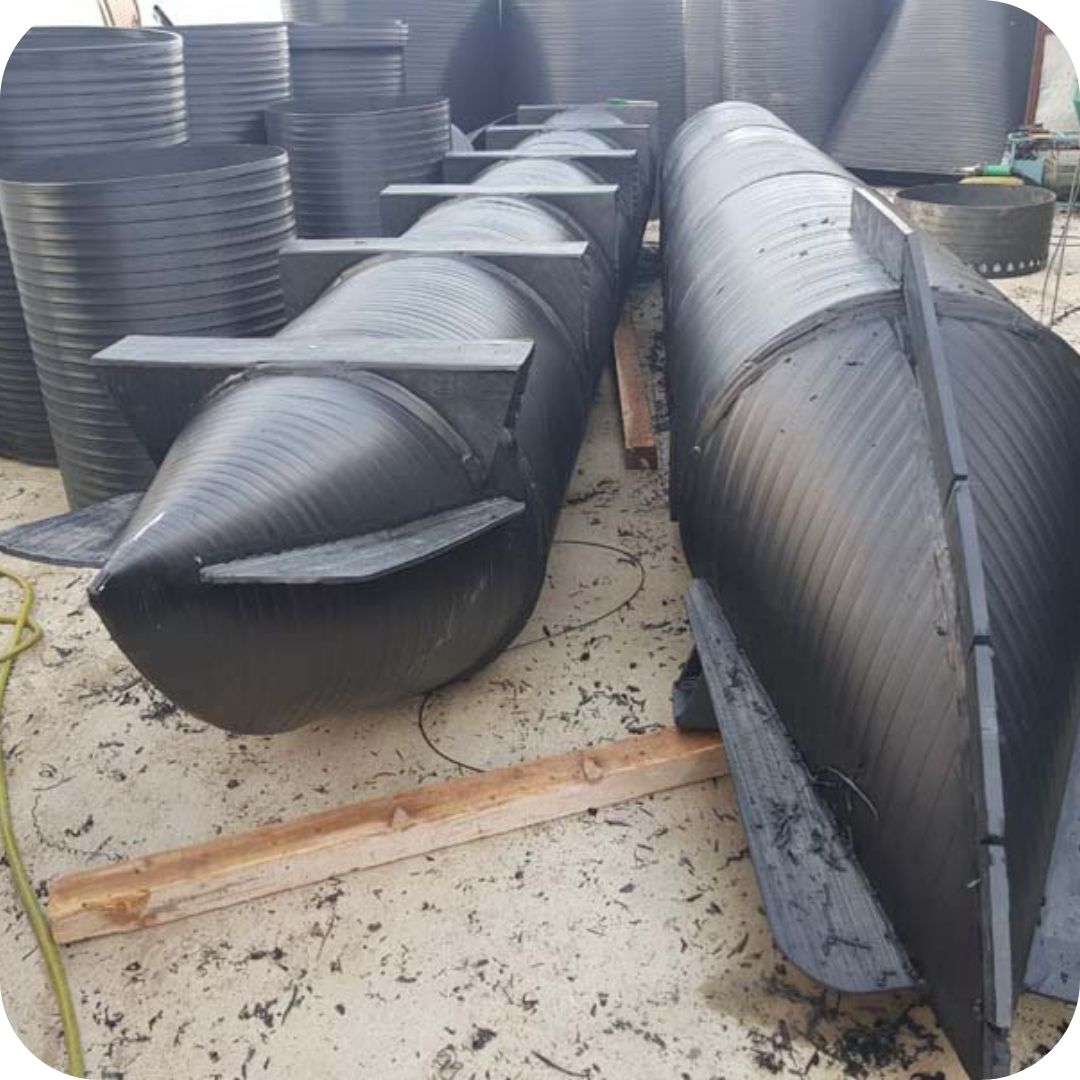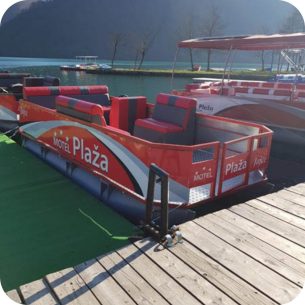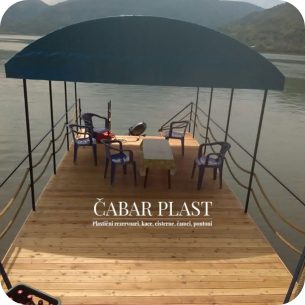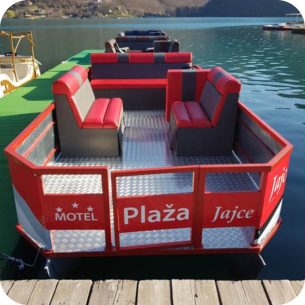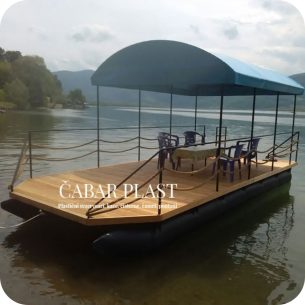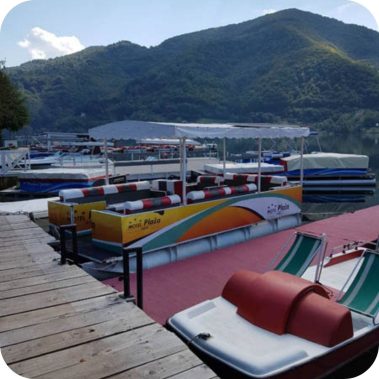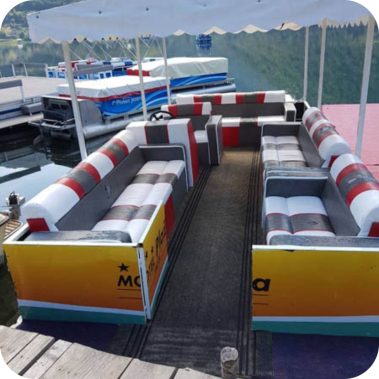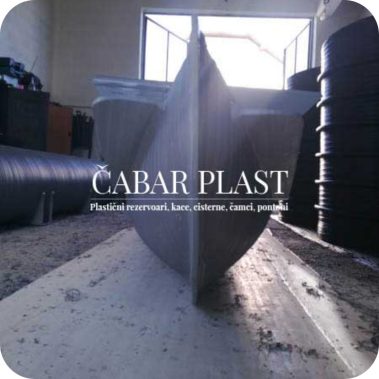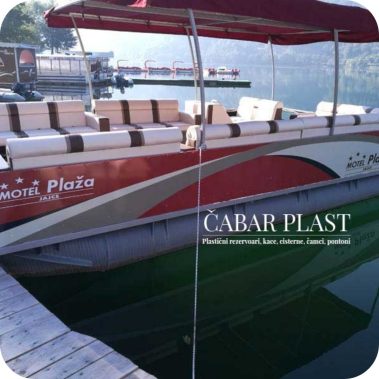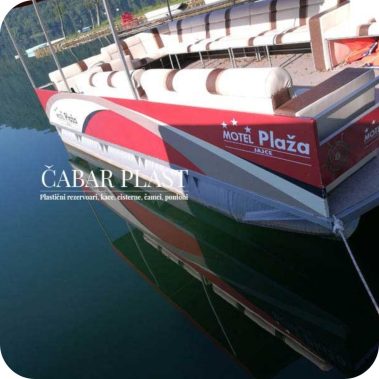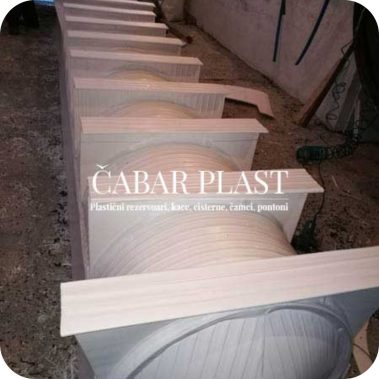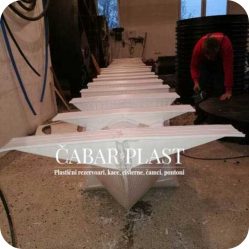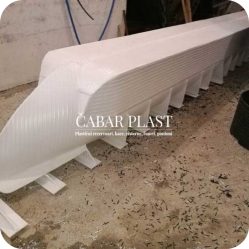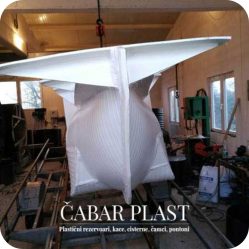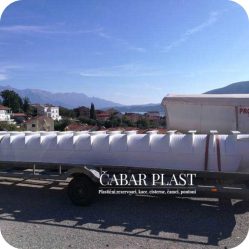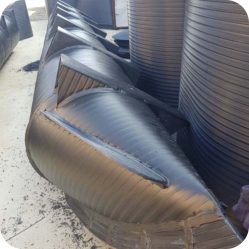How to Calculate the Buoyancy of a Catamaran, Raft, or Any Floating Object?
First, we need to know the buoyancy of the pontoons. Čabar Plast pontoons with an internal diameter of 60 cm have a buoyancy of 140 kg per linear meter, meaning, for example, a pontoon of 6 m in length has a buoyancy of 6×140=840 kg.
A pontoon with an internal diameter of 80 cm has a buoyancy of 230 kg per linear meter, meaning a pontoon of 6 m in length has a buoyancy of 6×230=1380 kg.
Čabar Plast pontoons are designed so that at maximum load of the catamaran or any other floating object, the pontoon is submerged halfway into the water. Therefore, it is necessary to know the total mass of the raft, catamaran, or other floating object when it is fully loaded, which means adding up the masses of the steel structure, timber, cabin, other cargo, and the maximum number of people who will be on the raft at one time.
Čabar Plast pontoons are easy to transport, install, and can carry heavy loads.
A catamaran that consists of three instead of two hulls is called a trimaran, which consists of one central hull and two outer hulls.
Our company, with years of experience monitoring market changes and the demands of our consumers, produces the most modern catamarans, trimarans, rafts, pontoons at the most favorable prices, all to meet the needs of our clients.










